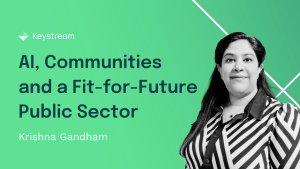28.05.2025
Do You Say Please and Thank You When You Speak to AI?
I do…! We talk to AI more often than we think. Whether you’re unlocking your phone with your face, asking your smart speaker to play your favourite song, or using predictive text to finish your messages—AI is quietly working behind the scenes.
But because it’s not always visible, we often don’t realise it’s there. And when we do, we’re not always sure what “AI” really means. It’s easy to assume anything that seems clever or automated must be artificial intelligence. I even heard someone say recently, “AI can’t help us—our processes are too complex. It still needs a human.” Ironically, that’s often exactly where AI could be most useful.
So what exactly is AI—and what isn’t?
What Is AI (and What Isn’t)?
AI isn’t one single piece of technology. It’s a field of computer science focused on creating systems that can perform tasks usually associated with human intelligence—things like recognising speech, understanding language, spotting patterns, or making decisions.
To do this, AI draws on a combination of technologies:
- Machine Learning (ML): Systems that learn from data and improve with experience.
- Deep Learning: A type of ML that uses multi-layered neural networks to process complex data like images or speech.
- Neural Networks: Algorithms inspired by how the brain works to identify relationships in data.
- Computer Vision: Teaching machines to interpret and “see” visual information—like recognising your face.
- Natural Language Processing (NLP): Enabling machines to understand and respond to human language.
AI is not a product; it’s a set of tools working together to simulate human-like abilities in digital systems.
Algorithms, Machine Learning, and AI – What’s the Difference?
These terms are often used interchangeably, but they’re not the same:
Algorithms are just sets of rules or instructions. Your calculator uses them—but that’s not AI.
Machine Learning builds on this. It allows systems to learn from data and get better at tasks over time.
Deep Learning is a more complex version of ML, often used in things like image or voice recognition.
AI is the bigger picture—the use of any combination of these to simulate human intelligence.
Helping You Navigate the AI Maze
We’re not a software company. We support public sector organisations in understanding where AI—or another approach entirely—can genuinely add value.
That includes:
- Identifying real problems worth solving
- Determining whether AI is the right tool
- Making sense of your data and systems
- Building confidence and capability across teams
Sometimes, the best solution isn’t AI—it might be better process design, clearer insight from existing data, or a more joined-up approach to digital delivery.
It’s easy to get lost in the language around AI. What really matters is: finding practical, sustainable solutions that work in your context.

